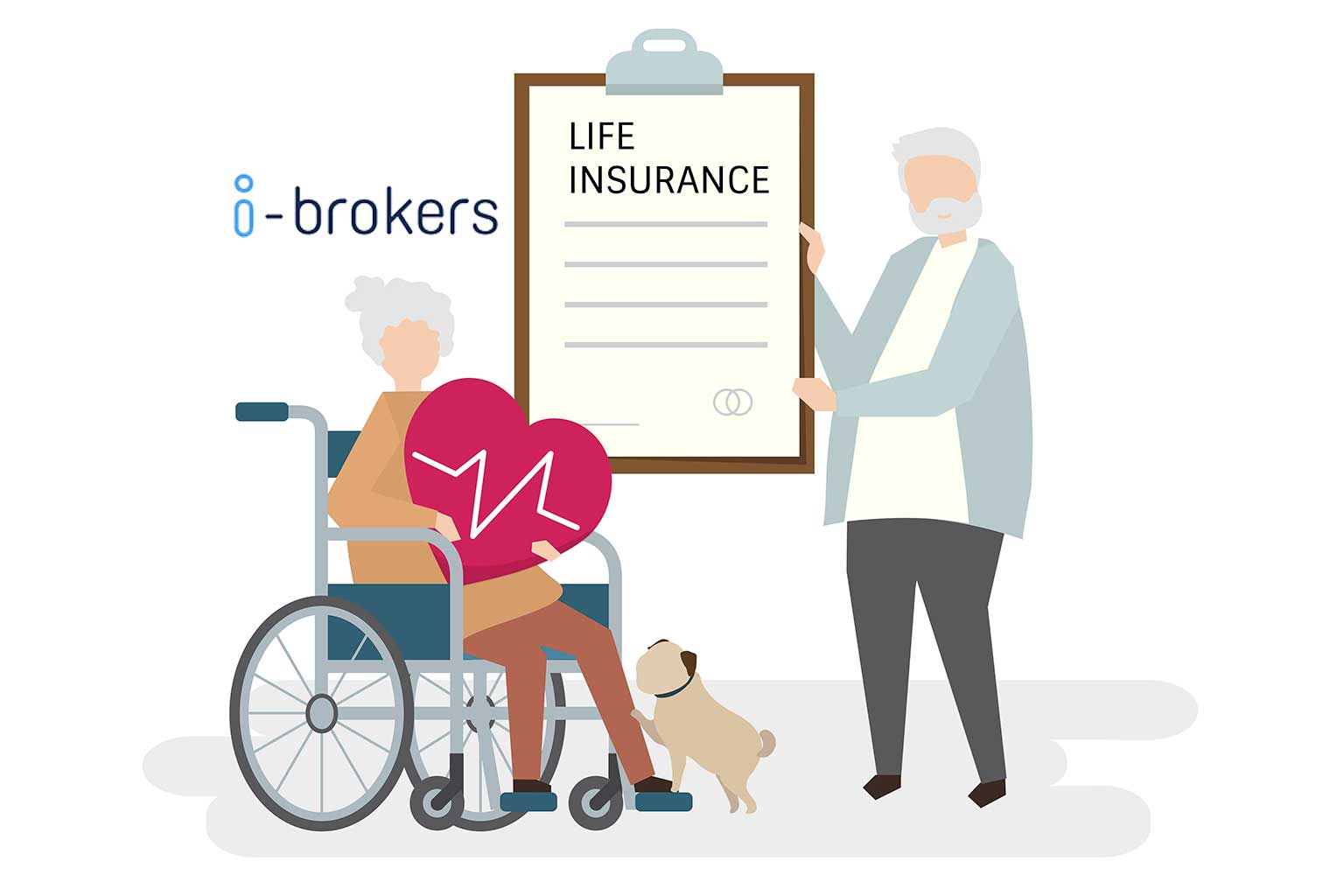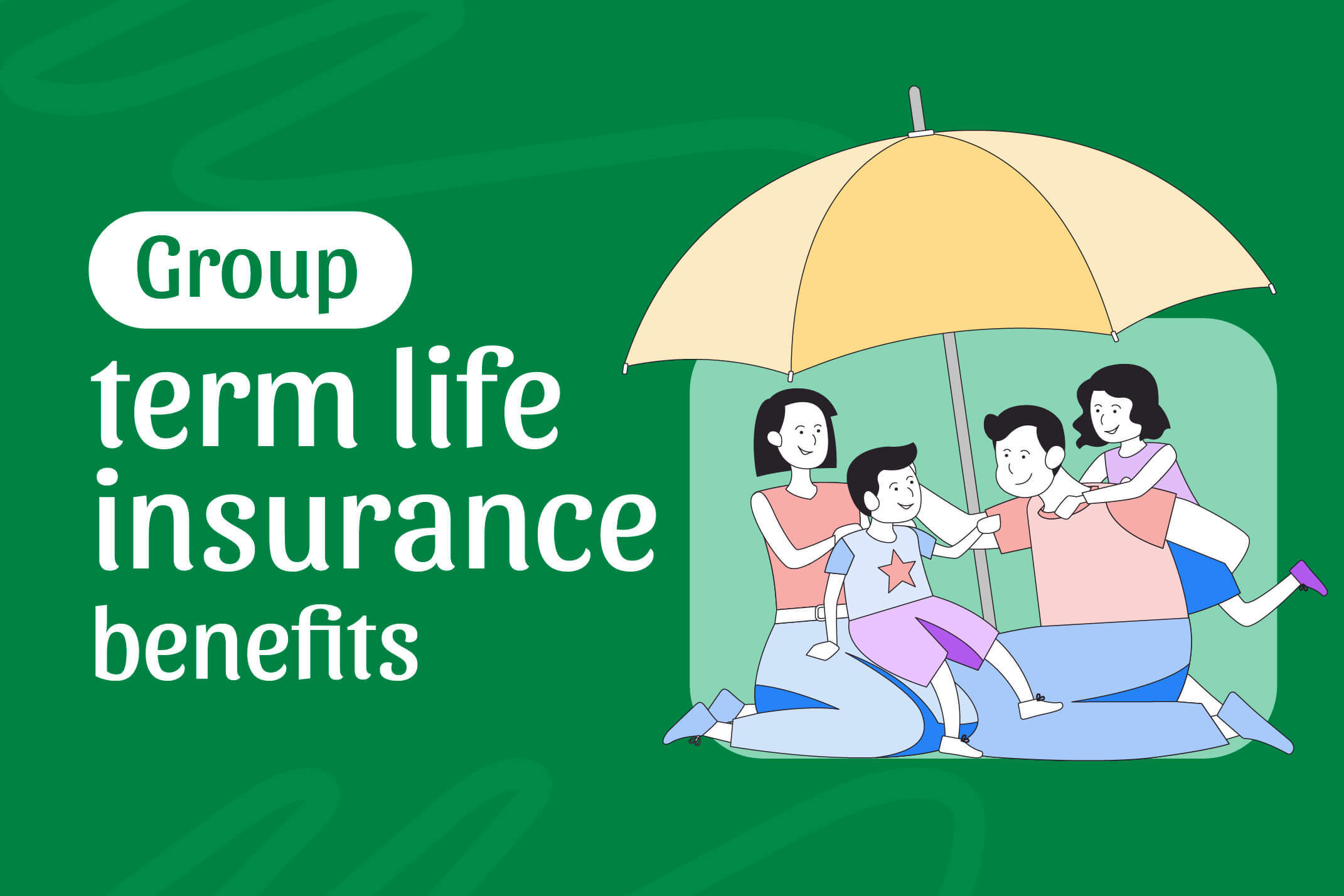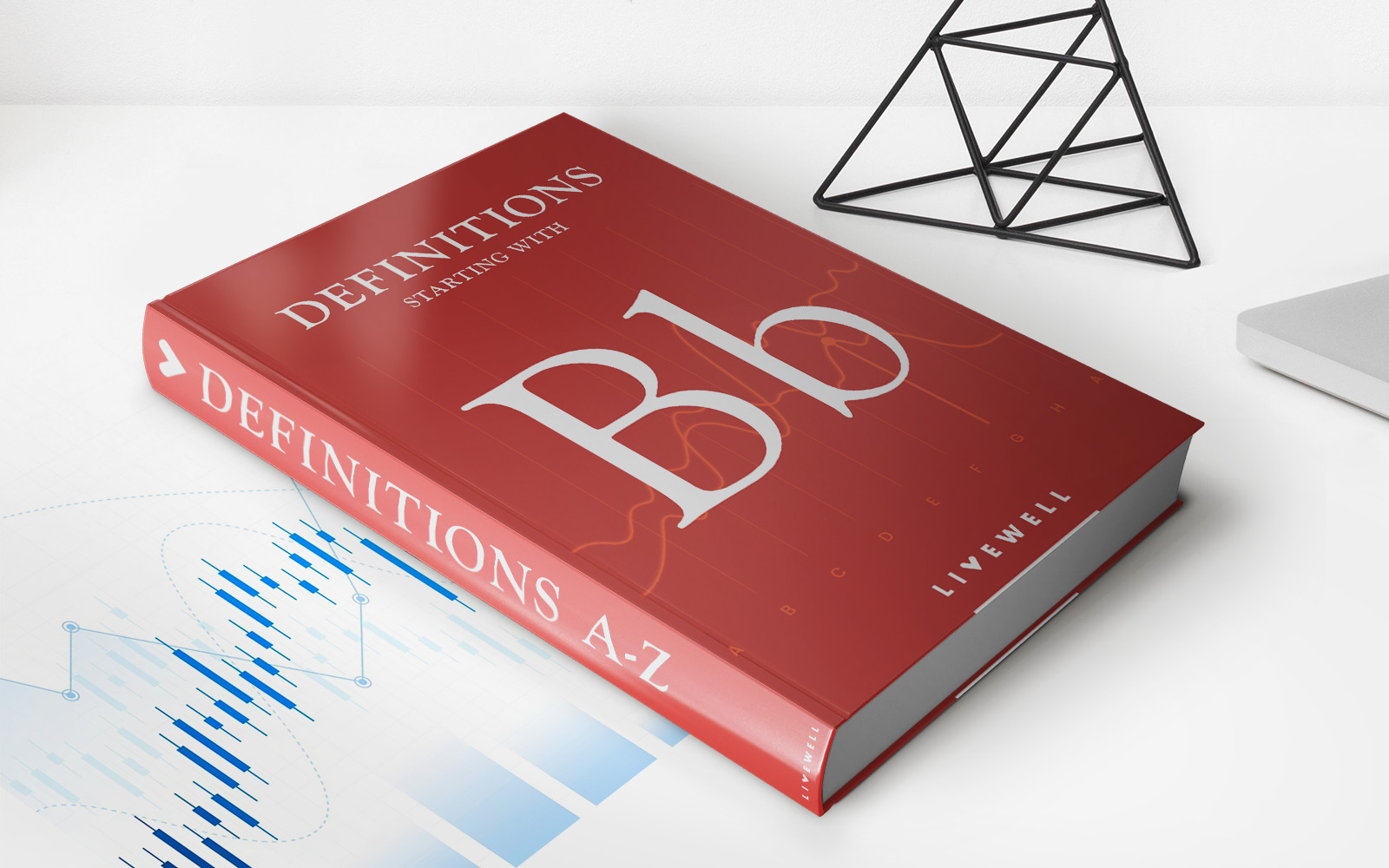

Finance
What Does Level Term Life Insurance Mean
Published: November 21, 2023
Learn what level term life insurance means in the world of finance and how it can financially protect your loved ones in the event of your passing.
(Many of the links in this article redirect to a specific reviewed product. Your purchase of these products through affiliate links helps to generate commission for LiveWell, at no extra cost. Learn more)
Table of Contents
- Introduction
- Definition of Level Term Life Insurance
- How Level Term Life Insurance Works
- Benefits of Level Term Life Insurance
- Drawbacks of Level Term Life Insurance
- Factors to Consider Before Choosing Level Term Life Insurance
- Is Level Term Life Insurance Right for You?
- Comparing Level Term Life Insurance with Other Types of Life Insurance
- Common Misconceptions about Level Term Life Insurance
- Tips for Finding the Best Level Term Life Insurance Policy
- Conclusion
Introduction
Welcome to the world of life insurance, where you have a plethora of options to choose from. One popular type of life insurance that provides a level of financial security for your loved ones is level term life insurance. In this article, we will explore what level term life insurance means, how it works, its benefits and drawbacks, factors to consider before choosing it, and whether it is the right choice for you.
Life insurance is a vital tool that helps protect your family’s financial future in the event of your untimely death. It ensures that your loved ones are taken care of and provided with financial stability when you are no longer there to provide for them.
Now, let’s dive into the specifics of level term life insurance. Level term life insurance is a type of life insurance that provides coverage for a specific period of time, typically ranging from 10 to 30 years. Unlike permanent life insurance policies, such as whole life or universal life insurance, which provide coverage for your entire lifetime, level term life insurance is designed to provide coverage for a set term.
Level term life insurance offers a fixed death benefit and premiums that remain the same throughout the policy term. This means that the death benefit your beneficiaries will receive upon your passing will not decrease over time. Additionally, the premiums you pay will remain unchanged, allowing for predictable and manageable payments over the duration of the policy.
The primary purpose of level term life insurance is to provide financial protection to your loved ones in the event of your death during the policy term. This financial protection can be used to cover various expenses, such as mortgage payments, outstanding debts, college tuition fees, and daily living expenses, ensuring that your loved ones can maintain their standard of living even without your income.
While level term life insurance is a popular option due to its simplicity and affordability, it is important to understand the benefits and drawbacks before making a decision. In the following sections, we will delve deeper into how level term life insurance works, its advantages and disadvantages, and what factors you should consider before choosing this type of policy.
Definition of Level Term Life Insurance
Level term life insurance is a type of life insurance that provides coverage for a specified period of time, known as the policy term. Unlike other types of life insurance, such as whole life or universal life insurance, level term policies offer coverage for a fixed duration, typically ranging from 10 to 30 years.
The term “level” in level term life insurance refers to the consistent and unchanging nature of the premiums and death benefit throughout the policy term. This means that the premiums you pay for the policy remain the same over time, ensuring predictability and ease in budgeting. Similarly, the death benefit, which is the amount paid out to your beneficiaries upon your passing, remains constant throughout the term of the policy.
One key aspect of level term life insurance is that it provides pure insurance coverage without any cash value accumulation or investment component. This makes it a simple and straightforward form of life insurance, focused solely on providing financial protection for your loved ones in the event of your death during the policy term.
Level term life insurance is typically purchased to cover specific financial obligations or responsibilities that may have a time limit. For example, you may choose a 20-year level term policy to align with the duration of your mortgage or until your children are financially independent. By selecting a policy term that matches the length of these obligations, you can ensure that your loved ones are protected during the critical years.
In the event of your passing during the policy term, your beneficiaries will receive the death benefit agreed upon when you purchased the policy. This lump sum payment can be used by your loved ones to cover various expenses, such as funeral costs, outstanding debts, daily living expenses, education expenses, or any other financial needs they may have.
It is important to note that level term life insurance does not provide coverage beyond the specified policy term. Once the term ends, the policy will usually expire, and no further benefits will be paid out if you pass away after the term has ended. At this point, you may have the option to renew the policy or convert it to a different type of coverage, but these options may come with increased premiums or changes in the terms and conditions.
Overall, level term life insurance offers a straightforward and affordable solution for individuals looking to provide financial protection to their loved ones during a specific period of their lives. However, it is essential to carefully consider your financial needs and goals before choosing a policy term and coverage amount that aligns with your specific circumstances.
How Level Term Life Insurance Works
Understanding how level term life insurance works is essential in making an informed decision about whether it is the right choice for you and your loved ones. Here is a breakdown of how level term life insurance operates:
1. Policy Term: When you purchase a level term life insurance policy, you choose a specific term or duration for which you want coverage. This term can range from 10 to 30 years, depending on your needs and preferences. During this period, your premiums and death benefit remain fixed.
2. Premium Payments: With level term life insurance, you pay regular premiums to the insurance company for the duration of the policy term. These premiums are typically set at the time of purchase and remain the same throughout the term of the policy. The level premiums make it easier to budget and plan for the insurance costs.
3. Death Benefit: The death benefit is the amount of money that will be paid out to your beneficiaries if you pass away during the policy term. When you purchase a level term life insurance policy, you select the amount of coverage you want, also known as the death benefit. This amount remains constant throughout the term of the policy.
4. Beneficiaries: You designate one or more individuals, known as beneficiaries, who will receive the death benefit upon your passing. It is important to regularly review and update your beneficiaries to ensure that your life insurance proceeds go to the intended recipients.
5. Renewal or Conversion Options: At the end of the policy term, you may have the option to renew the policy or convert it into a permanent life insurance policy, such as whole life or universal life insurance. However, these options may come at higher premiums or changes in the terms and conditions. It is important to carefully evaluate your options before the end of the term.
6. No Cash Value: Unlike some other types of life insurance, level term life insurance does not accumulate any cash value. This means that you cannot borrow against it or access any funds during the policy term. The coverage is solely focused on providing a death benefit to your beneficiaries.
Overall, level term life insurance works by providing fixed premiums, a consistent death benefit, and coverage for a specified policy term. It offers financial protection to your loved ones during a specific period, allowing them to maintain their standard of living and cover various expenses if you were to pass away during that time.
It is important to carefully consider the length of the policy term, the amount of coverage needed, and your overall financial goals when selecting a level term life insurance policy. Assessing your current and future financial obligations will help determine the appropriate duration and coverage amount to adequately protect your loved ones in the event of your death.
Benefits of Level Term Life Insurance
Level term life insurance offers several benefits that make it a popular choice among individuals seeking financial protection for their loved ones. Here are some key advantages of having a level term life insurance policy:
1. Affordability: Level term life insurance is generally more affordable compared to permanent life insurance policies like whole life or universal life insurance. The premiums for level term policies are often lower because they provide coverage for a specific period and do not build cash value.
2. Predictable Premiums: With level term life insurance, your premiums remain fixed throughout the policy term. This ensures that you can budget and plan for the insurance costs without worrying about unexpected increases in premiums.
3. Customizable Coverage Amount: When purchasing level term life insurance, you have the flexibility to choose the amount of coverage, also known as the death benefit, that suits your needs. This allows you to align the coverage with your financial obligations, such as mortgage payments, education expenses, or other outstanding debts.
4. Financial Protection: Level term life insurance provides a reliable financial safety net for your loved ones if you were to pass away during the policy term. The death benefit can be used to cover various expenses, including funeral costs, mortgage payments, living expenses, college tuition, and more. It ensures that your family can maintain their standard of living and avoid financial hardship during a difficult time.
5. Flexibility: Level term life insurance provides flexibility in terms of policy duration. You can choose a policy term that aligns with your specific needs, such as when your children will become financially independent or when you expect to pay off a significant debt. This gives you the opportunity to tailor the coverage to your unique circumstances.
6. Simplicity: Level term life insurance is straightforward and easy to understand. Unlike some other types of life insurance, it does not have complex investment or savings components. This simplicity makes it a convenient option for individuals looking for pure life insurance coverage without the complexities of cash value accumulation.
7. Peace of Mind: Having a level term life insurance policy can provide you with peace of mind that your loved ones will be protected financially if something were to happen to you. Knowing that they will have the necessary funds to cover immediate and long-term expenses can alleviate stress and uncertainty.
It is important to discuss your specific needs and financial goals with a licensed insurance professional to determine the most suitable level term life insurance policy for you. They can help you assess the appropriate coverage amount, policy term, and any additional riders or options that might benefit your individual situation.
Remember, level term life insurance is designed to provide temporary protection, and it is crucial to assess whether the term aligns with your current and future financial responsibilities. Regularly reviewing your insurance coverage as your circumstances change is also recommended to ensure that your loved ones remain adequately protected over time.
Drawbacks of Level Term Life Insurance
While level term life insurance offers many benefits, it is important to consider the drawbacks before making a decision. Here are some potential drawbacks of level term life insurance:
1. No Cash Value: Level term life insurance does not accumulate cash value over time like other types of life insurance, such as whole life or universal life insurance. This means that if you outlive the policy term, you will not receive any return on your premiums. If you are looking for an insurance option that provides an investment or savings component, level term life insurance may not be the best choice.
2. Limited Coverage Period: Level term life insurance provides coverage for a specific period, typically ranging from 10 to 30 years. Once the policy term ends, the coverage terminates, and you would need to purchase a new policy if you still require life insurance protection. This can be a drawback if you anticipate needing coverage beyond the initial term, as you may face higher premiums or potential difficulty obtaining a new policy due to changes in your health or circumstances.
3. Renewal and Conversion Options: At the end of the level term policy, you may have the option to renew the policy. However, the renewal option usually comes with increased premiums, as the insurance company recalculates the rates based on your age and potential changes in health. Additionally, converting the policy to a permanent life insurance policy may also result in higher premiums. It is important to carefully evaluate these options and consider the potential cost implications.
4. Premiums Can Increase: Although level term life insurance offers fixed premiums for the policy term, there is a possibility that your premiums may increase if you renew the policy or convert it to a different type of coverage. Changes in your age, health status, or the insurance company’s pricing structure can all impact the cost of premiums. It is crucial to review the terms and conditions of the policy and understand any potential future premium increases.
5. No Equity: Unlike homeownership, where you build equity over time, level term life insurance does not provide any equity or asset accumulation. The premiums you pay go solely towards the life insurance coverage, and there are no savings or investment components attached to the policy.
6. Termination of Coverage: If you miss premium payments, level term life insurance policies can lapse, resulting in the termination of coverage. It is important to ensure that you can continue to make timely premium payments to maintain the policy and keep your coverage intact.
7. Cost Considerations: While level term life insurance is generally more affordable than permanent life insurance, the premiums can still be a significant expense, especially for higher coverage amounts or longer policy terms. It is crucial to assess your budget and determine if the premiums fit within your financial means.
Understanding the potential drawbacks of level term life insurance allows you to make an informed decision about whether this type of coverage aligns with your needs and financial goals. Evaluating your current and future obligations, as well as your overall financial situation, can help you determine if level term life insurance is the right choice for you and your family. Consulting with a licensed insurance professional can also provide valuable guidance in selecting the most suitable policy for your circumstances.
Factors to Consider Before Choosing Level Term Life Insurance
Choosing the right life insurance policy is an important decision that requires careful consideration. Before deciding on level term life insurance, it is essential to assess various factors to ensure it aligns with your needs and financial goals. Here are some key factors to consider:
1. Policy Term: Evaluate the duration of coverage you need. Consider your current and future financial obligations, such as mortgage payments, outstanding debts, or the time it will take for your dependents to become financially independent. Select a level term that matches the length of these obligations.
2. Coverage Amount: Determine the appropriate death benefit amount based on your financial needs and the financial well-being of your loved ones in the event of your passing. Consider factors such as outstanding debts, income replacement, education expenses, and funeral costs.
3. Affordability: Assess your budget and ensure that the premiums for the level term life insurance policy are affordable and sustainable. Evaluate any potential future premium increases and ensure that the premiums fit within your financial means.
4. Health and Age: Your health and age can significantly impact the cost of life insurance premiums. Be aware that younger and healthier individuals generally have lower premiums. If you have pre-existing health conditions or are older, the premiums may be higher.
5. Renewal Options: Determine if the level term policy offers renewal options at the end of the initial term. Understand the potential premium increases and policy conditions for renewal. Evaluate whether you may need coverage beyond the initial term and assess the cost implications.
6. Conversion Options: Consider whether the policy allows conversion to a permanent life insurance policy, such as whole life or universal life insurance. Understand the terms and conditions related to the conversion option, including any potential changes in premiums.
7. Financial Stability of the Insurance Company: Research the financial stability and reputation of the insurance company offering the level term life insurance policy. Ensure they have a strong track record of meeting their financial obligations to policyholders.
8. Policy Riders and Options: Explore any additional riders or options available with the level term life insurance policy. Riders can provide added benefits or customization options, such as accelerated death benefit, waiver of premium, or additional coverage for specific circumstances.
9. Comparison Shopping: Obtain quotes and compare offerings from multiple insurance companies to ensure you are getting the best coverage at the most competitive rates. Consider factors beyond just pricing, such as customer service, claims process, and company reputation.
10. Review and Regular Assessment: Life insurance needs can change over time as your financial situation evolves. Regularly review your level term life insurance coverage to ensure it continues to meet your needs. Consider reassessing your coverage when major life events occur, such as marriage, the birth of a child, or the purchase of a new home.
By carefully considering these factors, you can make informed decisions when selecting a level term life insurance policy. It is always advisable to consult with a licensed insurance professional who can assess your unique circumstances and guide you in choosing the most appropriate coverage for you and your family’s financial security.
Is Level Term Life Insurance Right for You?
Deciding whether level term life insurance is the right choice for you depends on several factors. While level term life insurance offers many benefits, it may not be suitable for everyone. Here are some considerations to help determine if level term life insurance is a good fit for your needs:
1. Temporary Financial Protection: Level term life insurance is ideal if you only need coverage for a specific period. If you have financial obligations such as a mortgage, outstanding debts, or dependents who will become financially independent in the future, level term life insurance can provide a safety net during that time.
2. Budget Constraints: If you have a tight budget or want to keep your premiums affordable, level term life insurance may be a good option. The premiums for level term policies are generally lower compared to permanent life insurance policies, making it more accessible for many individuals and families.
3. Planning for Specific Goals: Level term life insurance allows you to align the coverage duration with your specific financial goals. For example, if you want to ensure your children are financially supported until they graduate from college or a loan is paid off, a level term policy can provide coverage for that specific period.
4. No Need for Cash Value: If you do not require a life insurance policy with a savings or investment component, level term life insurance is a suitable choice. It focuses solely on providing financial protection in the event of your passing during the policy term, without accumulating cash value over time.
5. Younger Age and Good Health: If you are young and healthy, you may qualify for lower premiums on a level term life insurance policy. Insurance companies typically consider age and health when determining premiums, so securing coverage at a younger age can result in more affordable rates.
6. Flexibility: Level term life insurance offers flexibility in terms of coverage duration and death benefit amount. You can select a policy term that aligns with your specific circumstances and adjust the death benefit based on your financial obligations and goals.
7. No Need for Lifetime Coverage: If you do not anticipate needing life insurance coverage for your entire lifetime, level term life insurance may be a better choice than permanent life insurance. Permanent life insurance policies can be more expensive and provide coverage until death, whereas level term life insurance focuses on a specific period.
However, level term life insurance may not be the right fit if you have long-term financial needs or want coverage for your entire life. If you prefer a policy with cash value accumulation, flexible premium payments, or the ability to borrow against the policy, you might consider other types of life insurance, such as whole life or universal life insurance.
Ultimately, the decision of whether level term life insurance is right for you depends on your unique financial situation, goals, and priorities. It is advisable to discuss your needs with a licensed insurance professional who can help you assess your options and select the most suitable policy to protect your loved ones and provide financial security in the event of your passing.
Comparing Level Term Life Insurance with Other Types of Life Insurance
When considering life insurance options, it is important to understand how level term life insurance compares to other types of life insurance policies. Here is a comparison between level term life insurance and other common types of life insurance:
1. Level Term Life Insurance vs. Whole Life Insurance: Level term life insurance provides coverage for a specified term, while whole life insurance offers coverage for your entire lifetime. Whole life insurance policies also accumulate cash value over time, which can be used for loans or withdrawals, whereas level term policies do not build any cash value. Whole life insurance premiums are generally higher compared to level term premiums since they provide lifetime coverage and a cash value component.
2. Level Term Life Insurance vs. Universal Life Insurance: Universal life insurance, like whole life insurance, offers coverage for your lifetime. However, universal life insurance policies provide more flexibility in premium payments and death benefit amounts. Universal life insurance policies also accumulate a cash value component, whereas level term policies do not. The premiums for universal life insurance policies tend to be higher than level term premiums due to the additional benefits and flexibility.
3. Level Term Life Insurance vs. Variable Life Insurance: Variable life insurance policies allow the policyholder to invest part of the premium payments into investment accounts. The death benefit and cash value of variable life insurance can fluctuate depending on the performance of the investment accounts. Level term life insurance, on the other hand, focuses solely on the death benefit without any investment or cash value component.
4. Level Term Life Insurance vs. Return of Premium (ROP) Term Life Insurance: ROP term life insurance is a variation of level term life insurance that provides a refund of the premiums paid if the policyholder outlives the policy term. While ROP term life insurance offers the possibility of getting premiums back, the premiums for ROP policies are higher compared to traditional level term policies. ROP term life insurance can be a good choice if you want some return on the premiums paid, but it may not be cost-effective compared to investing the difference in premiums elsewhere.
5. Level Term Life Insurance vs. Group Life Insurance: Group life insurance is typically offered through an employer or organization, and it provides coverage to a group of individuals. Group life insurance may be more affordable due to the group purchasing power, but it often offers limited coverage amounts. Level term life insurance policies can provide more flexibility in coverage and allow you to select the appropriate death benefit amount for your specific needs.
When comparing life insurance options, consider factors such as your budget, coverage needs, desired policy duration, cash value accumulation, and premium flexibility. Each type of life insurance has its own pros and cons, and what works best for you will depend on your unique circumstances and preferences.
It is advisable to consult with a licensed insurance professional to assess your specific needs and compare different life insurance options. They can provide personalized guidance and help you select the most suitable policy that meets your financial goals and provides the necessary protection for your loved ones.
Common Misconceptions about Level Term Life Insurance
Despite its popularity, level term life insurance is sometimes subject to misconceptions and misunderstandings. Let’s address some common misconceptions associated with level term life insurance:
1. It’s too expensive: One of the biggest misconceptions is that level term life insurance is unaffordable. In reality, level term life insurance is often more affordable than other types of life insurance, such as whole life or universal life insurance. The premiums for level term policies are generally lower since they provide coverage for a specific term and do not include a cash value component.
2. It’s only for young individuals: While it’s true that getting life insurance at a younger age can result in lower premiums, level term life insurance is not exclusively for young individuals. People of all ages can benefit from level term policies, especially if they have specific financial obligations or short-term needs they want to address.
3. There’s no need for life insurance if you don’t have dependents: Life insurance is not just for individuals with dependents. If you have financial obligations, such as outstanding debts, a mortgage, or funeral expenses, life insurance can ensure these costs are covered. Additionally, life insurance can provide funds for charitable donations or leave a financial legacy to loved ones.
4. It’s unnecessary if you have coverage through an employer: While group life insurance coverage provided by an employer is beneficial, it may not be sufficient to meet all your needs. Employer-sponsored coverage typically has limitations, such as low coverage amounts, limited portability, and the risk of losing coverage upon leaving the job. Supplementing with a level term life insurance policy can provide additional financial security.
5. Your term can’t be changed: Some individuals believe that once they choose a term for their level term life insurance policy, it cannot be adjusted. However, there are often options to renew, convert, or even extend the policy term. It’s important to review the terms and conditions of your specific policy to understand your options.
6. You don’t need life insurance if you’re single or have no dependents: While it’s true that the primary purpose of life insurance is to provide for dependents, it can also be beneficial for single individuals. Life insurance can help cover funeral expenses, outstanding debts, and provide a financial gift to loved ones or charitable organizations.
7. You’ll lose your premiums if you outlive the policy: One misconception is that if you outlive the term of your level term life insurance policy, you lose the premiums paid. However, level term policies are designed to provide coverage during the specified term, and if you outlive that term, you simply don’t receive a death benefit payout. The premiums paid throughout the policy term provided you with the peace of mind and financial protection during that period.
It is crucial to separate fact from fiction when considering life insurance options. By understanding the realities of level term life insurance, you can make informed decisions that align with your financial goals and provide the right level of protection for you and your loved ones. Consulting with a licensed insurance professional can help dispel any misconceptions and provide expert guidance tailored to your specific needs.
Tips for Finding the Best Level Term Life Insurance Policy
Choosing the best level term life insurance policy requires careful consideration of various factors. Here are some tips to help you navigate the process and find the policy that suits your needs:
1. Assess Your Coverage Needs: Determine the amount of coverage you need based on your financial obligations, such as outstanding debts, future expenses, and income replacement for your loved ones. Understanding your coverage needs will help determine the appropriate death benefit amount for your level term life insurance policy.
2. Evaluate Policy Terms: Consider the duration of coverage you require. Assess your current and future financial responsibilities, such as mortgage payments or funding your children’s education, to choose a policy term that aligns with those obligations.
3. Compare Multiple Quotes: Obtain quotes from multiple insurance providers to compare premiums and coverage. Shopping around allows you to find the most competitive rates and ensure that you are getting the best value for your money. Consider both online quotes and working with an insurance agent to explore different options.
4. Research the Insurance Company: Investigate the financial stability and reputation of insurance companies offering level term life insurance policies. Look for companies with strong financial ratings and positive customer reviews. A reliable insurance company will provide peace of mind that they will fulfill their financial obligations in the event of a claim.
5. Review Policy Riders and Options: Understand the optional riders and additional benefits available with the level term life insurance policies you are considering. These can include features such as accelerated death benefit riders, waiver of premium, or additional coverage for specific circumstances. Evaluate which riders align with your needs and consider the cost implications.
6. Check Conversion and Renewal Options: If you anticipate potential changes in your life insurance needs or want the option to continue coverage beyond the initial term, review the conversion and renewal options of the level term policies. Understand the terms and conditions, including any potential premium increases or changes in coverage.
7. Read and Understand the Policy Terms and Exclusions: Thoroughly review the policy terms, conditions, and exclusions. Pay attention to any limitations or exclusions that may impact the coverage, such as specific health conditions or high-risk activities. Understanding the fine print will help you make an informed decision and avoid surprises in the future.
8. Consult with a Licensed Insurance Professional: Seek guidance from a licensed insurance professional who can assess your unique circumstances and provide personalized advice. They can help you understand the complexities of different policies, explain insurance terminology, and assist you in selecting the best level term life insurance policy based on your specific needs and budget.
9. Consider Customer Service and Claims Process: Research the insurance company’s customer service reputation and claims process. Read reviews and seek recommendations from others who have dealt with the company. A responsive and efficient claims process can provide peace of mind during a time of need.
10. Regularly Review and Update Your Policy: Life circumstances change over time, so ensure that you regularly review your level term life insurance policy. As your financial needs and obligations evolve, you may need to adjust your coverage amount or duration. Regularly reassessing your coverage will help ensure that your policy remains in line with your current situation.
Finding the best level term life insurance policy requires careful consideration of your coverage needs, comparison shopping, and a thorough understanding of policy terms. By following these tips and seeking professional advice, you can make an informed decision and obtain the level term life insurance policy that provides financial protection for you and your loved ones.
Conclusion
Level term life insurance offers a practical and cost-effective solution for individuals seeking financial protection for their loved ones. It provides a fixed death benefit and level premiums for a specific policy term, ensuring that your beneficiaries are taken care of in the event of your untimely passing. With its affordability, simplicity, and flexibility, level term life insurance has become a popular choice for many people.
However, it is important to carefully consider your individual needs and circumstances before deciding if level term life insurance is right for you. Assessing factors such as policy term, coverage amount, and budget constraints will help ensure that you choose an appropriate policy that aligns with your financial goals.
Remember to review the reputation and financial stability of insurance companies, comparing quotes from multiple providers, and understanding the policy terms, including renewal or conversion options. Consulting with a licensed insurance professional can provide valuable guidance in navigating the complexities of life insurance and selecting the best level term policy for your specific needs.
Life insurance is a crucial tool for securing your family’s financial future. Whether you have dependents to provide for or financial obligations that need coverage, level term life insurance can offer peace of mind and protect your loved ones from the uncertainties of life.
In conclusion, while level term life insurance may not be the perfect fit for everyone, it is a valuable option for many individuals and families. By carefully considering your needs, comparing options, and seeking professional advice, you can find the best level term life insurance policy that suits your requirements and provides the necessary protection for your loved ones. Investing in level term life insurance is investing in the financial security and well-being of your family, even after you are no longer able to provide for them.














